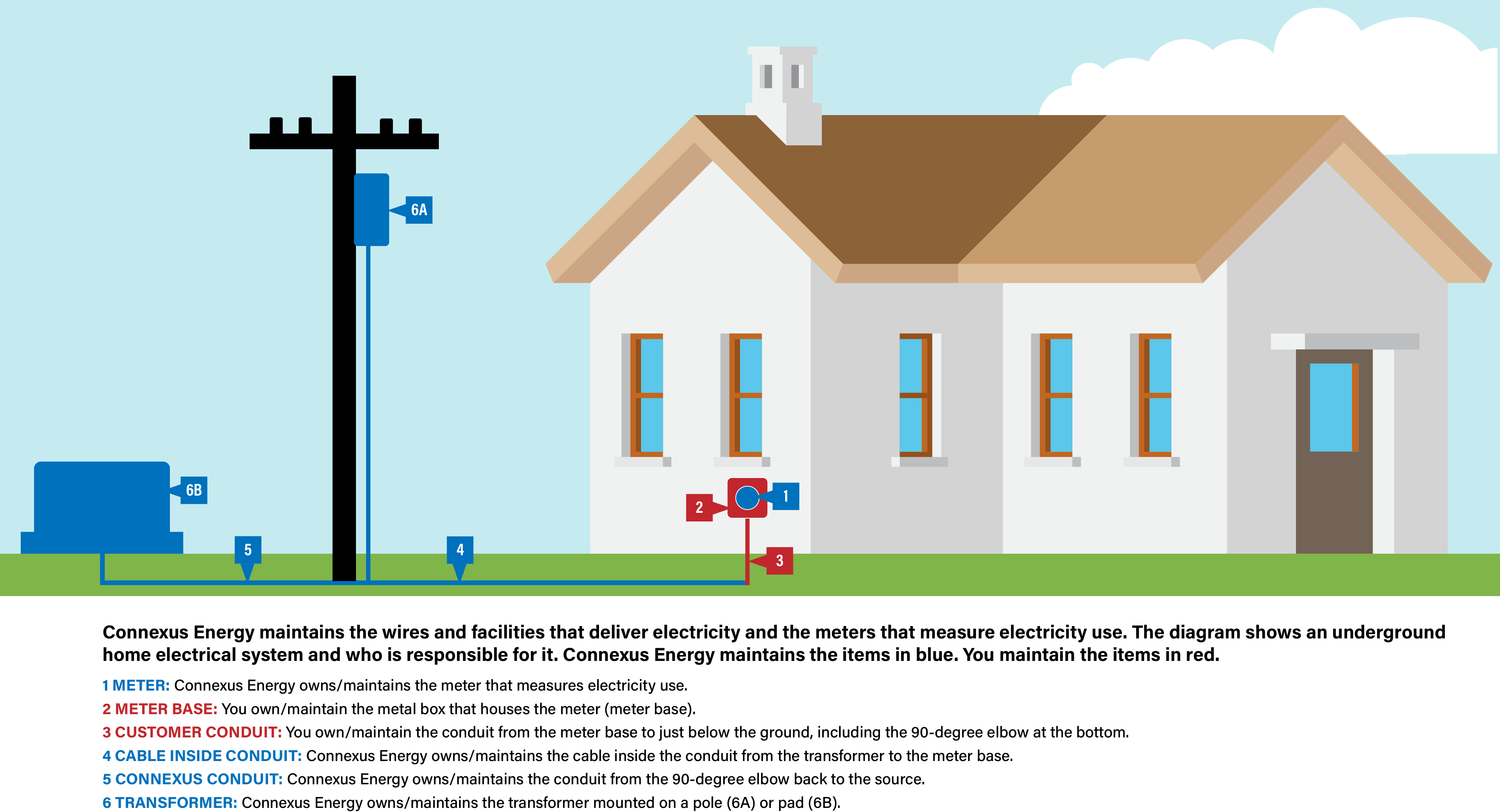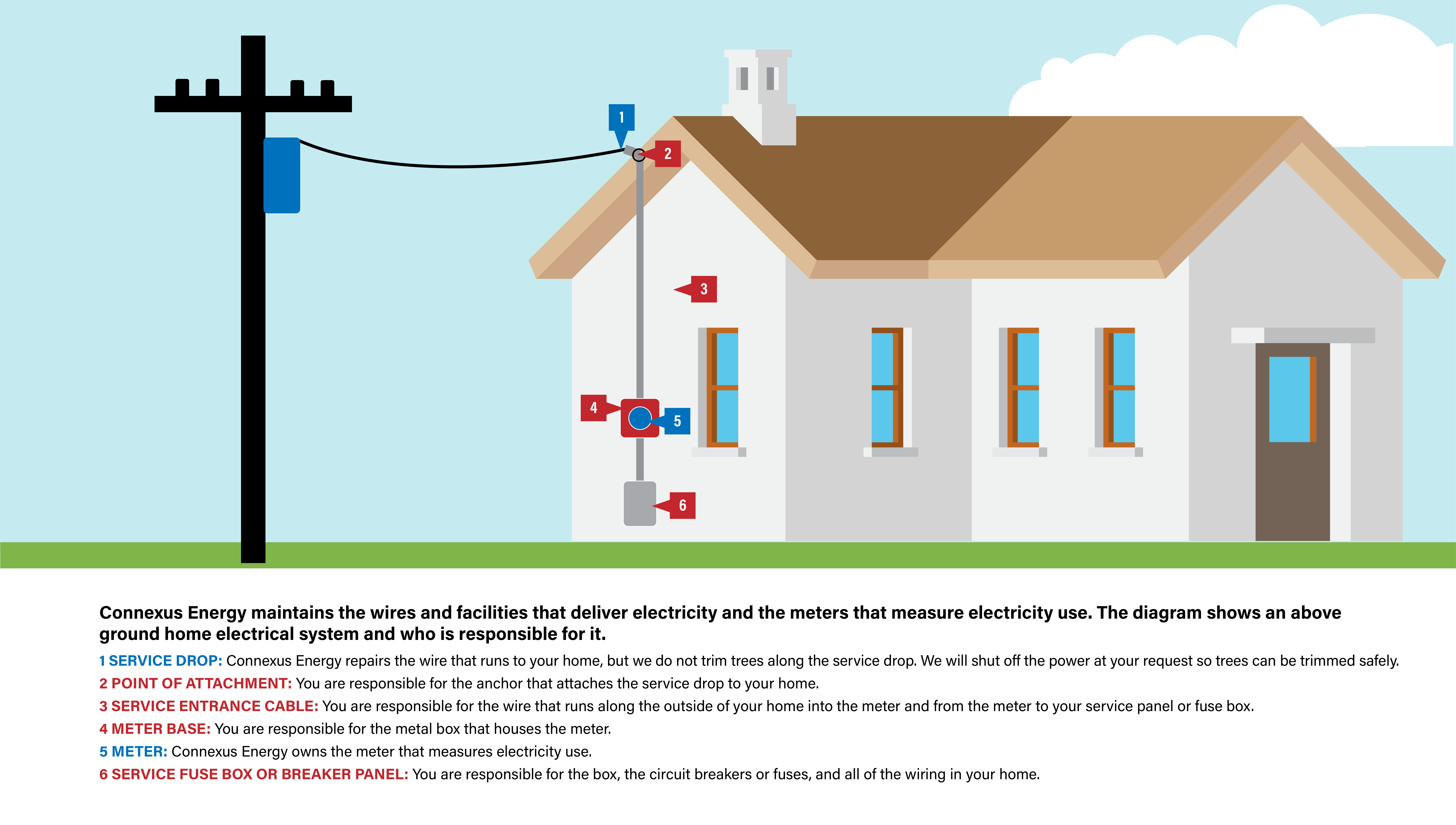-
Residential
Everything we do is for the benefit our members. We’re proud to provide a wide variety of products and services for your home, helping you save time, money and energy.
-
Business
Everything we do is for the benefit our members. We’re proud to provide a wide variety of products and services for your business, helping you save time, money and energy.
-
Contractors
Contractors
We’re dedicated to helping our members make smart energy usage decisions. We offer many informational and educational resources, programs and incentives, and energy-efficiency rebates for both business and residential members.
-
Clean Energy & EVs
Clean Energy & EVs
As part of our strategic initiatives, we are committed to environmental leadership. Pursuing renewable energy alternatives and giving members the choice to support those initiatives is the right thing to do. With a wide variety of commercial and residential programs, we will partner with you in your efforts to go green, whether at home or at work.
-
Company
Based in Ramsey, Minnesota, Connexus Energy is Minnesota’s largest consumer-owned electric cooperative, providing electricity and related products to member residents and businesses. The Connexus Energy Board of Directors, elected by our membership, governs the electric cooperative. We serve more than 147,000 members in portions of Anoka, Chisago, Hennepin, Isanti, Mille Lacs, Ramsey, Sherburne and Washington counties.
- Residential
- Business
- Contractors
- Clean Energy & EVs
- Company

Meter Information
Meter Information
The meter technology serves as a platform to help us deliver improved programs and services, including:
- Top tier reliability – the current meter technology allows us to pinpoint and respond to outages quickly and effectively, a tremendous benefit to members.
- Member tools & service – current and future tools to empower our members with information to make knowledgeable decisions regarding their electricity use.
- Environmental benefits – provides better interconnectivity of renewable energy sources, demand response, and energy efficiency.
AMI meter safety
Members may have heard about potential health effects related to radio frequency (RF) emissions from the new meters.
The meters, manufactured by Honeywell (formerly Elster), use the public 900 MHz spectrum to send signals back to Connexus Energy.
About Radio Frequencies
In the United States, the Federal Communications Commission (FCC) establishes the requirements for use of the RF spectrum and acceptable exposure limits for the public. Honeywell meters comply with and exceed these requirements, as well as international requirements set by global bodies. Typical RF exposure from Honeywell meters is well below the most conservative limits. There are two reasons for this: infrequent signal transmission and distance from the source.
RF exposure is based on the transmitter’s power and your distance from the source. In general, doubling your distance cuts the “power density” by a factor of four. That’s a major reason why radio waves from the Honeywell meter, at a distance of ten feet, are only about one one-thousandth as much as a typical cell phone.
One concern is that long-term use of devices like cell phones might have unexpected health effects, even if daily exposure is low. The World Health Organization (WHO) advises: “A large number of studies have been performed over the last two decades to assess whether mobile phones pose a potential health risk. To date, no adverse health effects have been established for mobile phone use.”
Cell phones are typically held against your head when in use, while Honeywell meters are on the exterior of your house or building.
Should you be concerned about long-term exposure to smart meters if scientists haven’t established health problems from cell phone use? Consider that Honeywell meters emit a one-watt signal for no more than four to five seconds every four to six hours a day. When compared to a cell phone, it would take more than one thousand years of exposure to the meter’s radio waves to equal that of one month of typical cell phone use.
AMI privacy and security
Privacy and security are fundamental to the AMI network solution. The comprehensive security design protects the AMI network and keeps customer data safe from intrusion.
Standard industry security features are built into the smart meters, communications networks, pole-top mounted network devices, network management system, and head-end software. Data is protected while it resides in the end devices and network devices, as well as during network transmission. System user activity is monitored and recorded for auditing and compliance.
- What type of data does an advanced meter collect?
Just like older meters, advanced meters collect energy usage data. Advanced meters also collect additional operational data such as hourly usage data, voltage data, outage data, and diagnostic flags to help us provide more reliable service.
Advanced meters do not collect, store, or transmit member-identifying information such as names, addresses, or usage data on individual appliances or equipment.
-
How does Connexus use my energy usage data?
We use member energy usage and operational data for billing purposes, troubleshooting, and resolving problems with equipment or solutions. In addition, we will eventually provide this data for our residential members to view online and will be able to offer new pricing programs. -
Will Connexus share my information?
No. We treat personal information and data about our members as confidential. You retain ownership of your own privacy data (including energy usage). Connexus Energy will not disclose that information to external parties without your permission, except for official Connexus Energy business or as required by law. -
How secure is my data in the wireless communication system?
Extensive cyber-security measures are in place throughout the AMI network to secure and protect customer data.
• Access to meters and usage data is controlled with authorization requirements.
• Information is secured at the meter and to our systems with advanced encryption.
• Pole-top network devices are placed in locked and alarmed boxes to prevent unauthorized access.
• Data from the network must pass through firewalls and security components before reaching Connexus.
• All access to the AMI system is logged and recorded to alert us of unusual activity. -
AMI security features
Multi-pronged security architecture provides confidentiality, integrity, availability, and auditability, and includes:
• Access and authorization – supports role-based user access, so that only users with certain levels of authority can perform specific tasks. The system also uses access control lists.
• Authentication – limits transmissions on the AMI network to authorized devices and personnel only. The AMI system deploys sophisticated authentication techniques.
Information security – use of AES encryption and authentication on each section of the communications network.
• Information security is further enhanced through the use of auditing and logging of system activities and data manipulation, guaranteeing non-repudiation of all system information.
• Data integrity and encryption – ensures that information generated and passed through the system has not been changed or altered in transit – either inadvertently or intentionally. Deploys NIST-approved encryption modes and algorithms.
• Monitoring and reporting – The AMI system incorporates security audit logging and reporting to allow early detection of any possible security issues.
What's yours, what's ours
Underground facilities

Overhead facilities

your most powerful membership®
These four words focus on the most important component of our cooperative: our members. In a cooperative, everything we do is for the benefit of our membership. This vision provides daily inspiration to build powerful partnerships with our members.

Contact Connexus Energy
Get in touch with Connexus Energy. Call, email, stop in, or fill a form with your questions and feedback.




